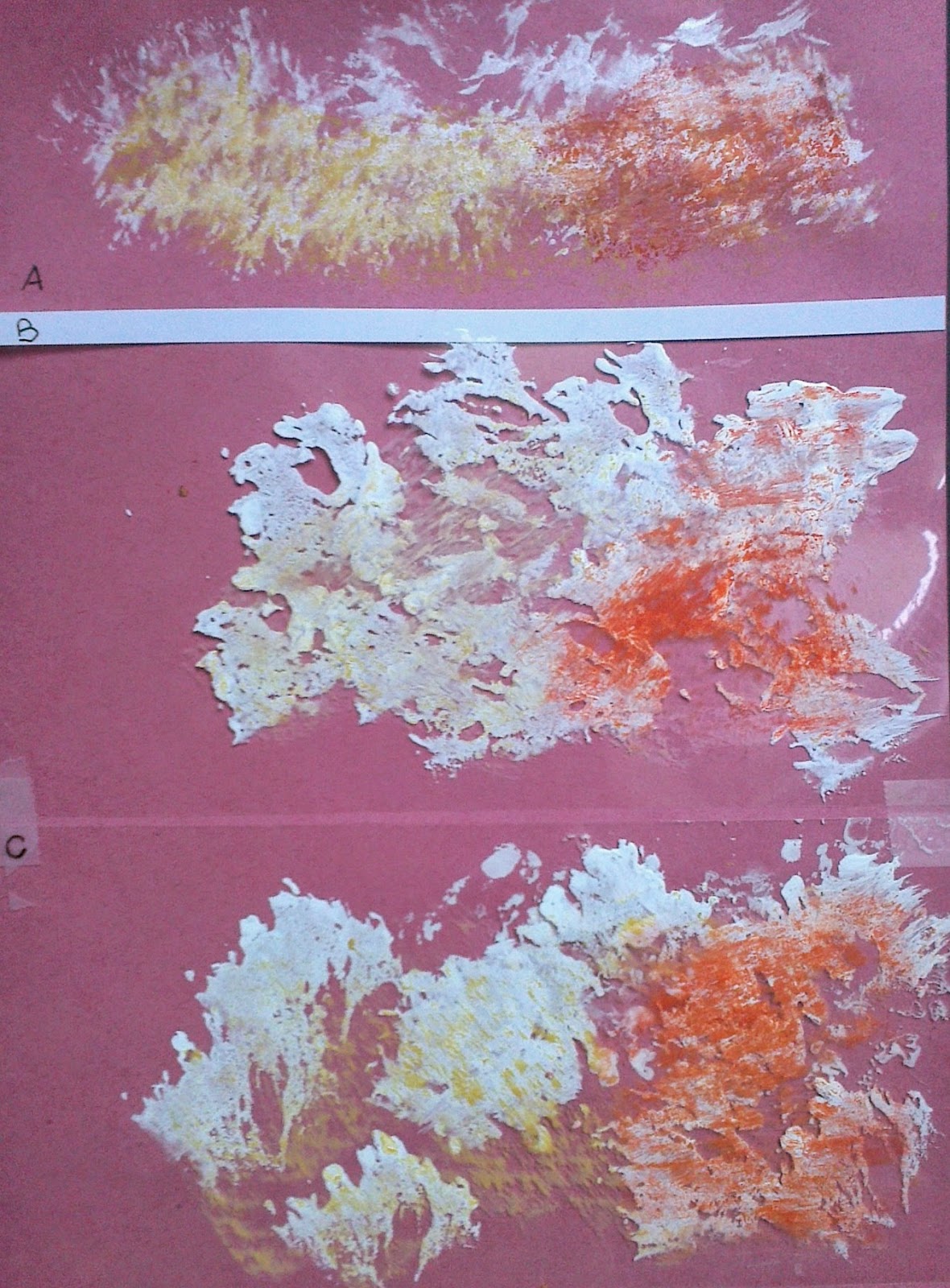Always find small pieces of fabric difficult to work, particularly if its machine stitching, so considered a large piece of calico and squared it up with pencil and stitch outlines for easy viewing on both sides. Also needed to consider the threads and colour sequences so that once I started I could get a flow.
Contemplating is probably the most important part before setting off, so STITCH
 |
| Ref 6.3.1 |
Thread, texture
Ideas, imagine
Track, turn
Coils, contrast
Handle, hazards
To get ideas for the mood of the movement in water and sky I chose words such as: swirl, meander, ripple, choppy, lapping, ebb and flow, waves, undulating, reflections, pools and pinned them to my work board. The calico and a variety of backings were used.
Sample one
 |
| Ref 6.3.2 front |
Row 2 change needle to 100 but kept threads and tension the same. Trying to get a rounded and wave like movement set of across the 4 squares
 |
| Ref 6.3.2 back |
Row 4 using same threads needle and setting wanted to meander in various directions but left it looking open so decided to work it over with the new threads introduced in row 5
Row 5 introduced new colour of bottom thread and worked fast and furious and the result a more gathered and condensed square. I realised perhaps a thicker vilene would have held shape better. Stitching in small squares was a challenge, just getting into feel of it and was over the edge!!
Sample two
 |
| Ref 6.3.3 front |
 |
Ref 6.3.3 back |
 |
| Ref 6.3.4 front |
 |
| Ref 6.3.4 back |
Oh dear things were going from bad to worse in this series...
I had always enjoyed free machine embroidery but realised my forte was in larger areas. I often used zig zag stitch to cover fabric, but in most instances I colour fabric before stitching and go over the stitches in multiple directions. The restriction of 3m squares was producing just a mess. I was trying to do different directions, speeds and tensions and it had just puckered. Looking for an excuse decided Sample four would need to iron on a thicker vilene, but perhaps I should bring out the hoop and read back over my notes of good practise from previous DS chapters. I realised I had fallen into bad habits and had not experimented as much as I should have. I left this sample in as a lesson with a note attached saying ...'when you are in a hole stop digging!'
Sample four from this sample on through to Sample 5 and 6 used needle 120.
 |
| Ref 6.3.5 front |
 |
| Ref 6.3.5 back |
Sample five Was a little more adventurous with yarns in this sample but had a multitude of
 |
| Ref 6.3.6 front |
 |
| Ref 6.3.5 back |
problems with rayon yarn that kept breaking if I tried to increase tension on top thread. The pink perle shown in first row samples A, B and reverse of C and again in row 5 was susceptible to distorting and run out very fast. The hand dyed string Sample 1D, sari yarn Sample 2A , 2D and 4 C were appliqued as was embroidery floss in 4C
 |
| Ref 6.3.7 front |
 |
| Ref 6.3.7 back |
better images and I felt that by turning fabric over and showing contrast of back on front on one square Sample 4B and 5 A I achieved an interesting result that gave contrast of movement and colour.
 |
| Ref 6.3.8 |












































